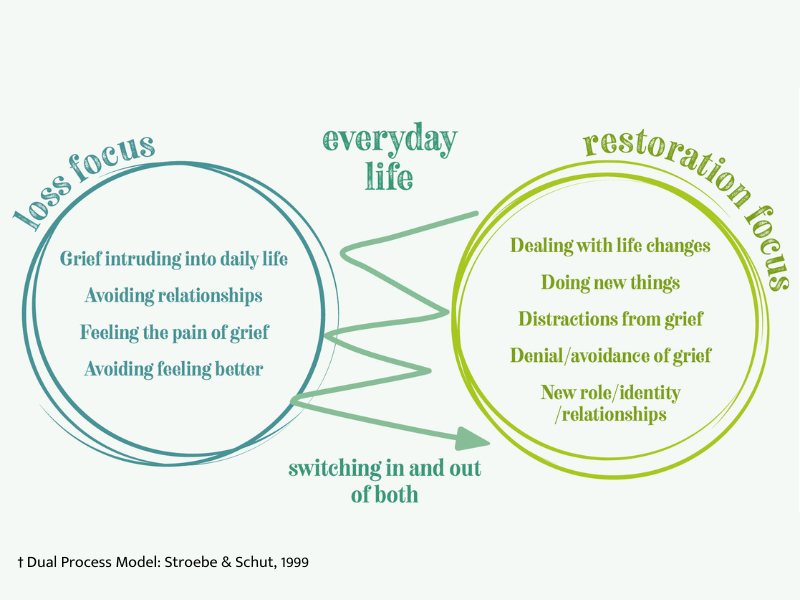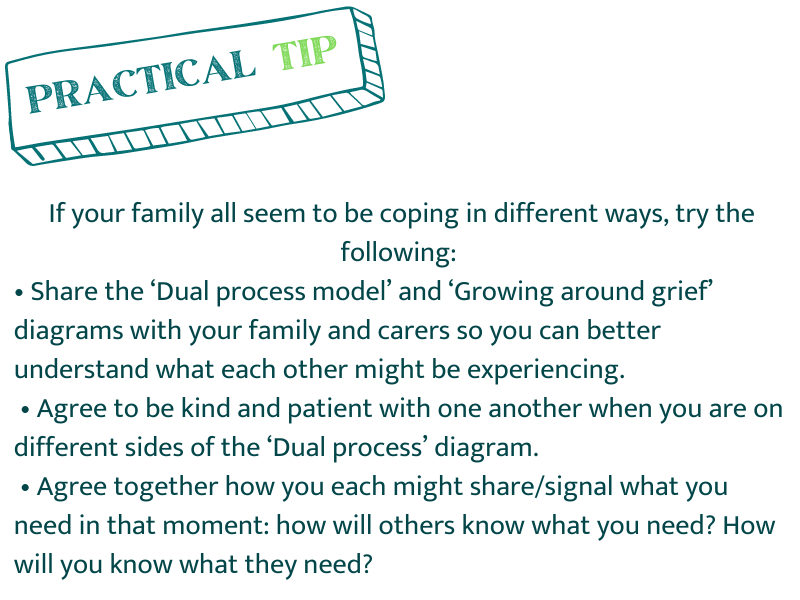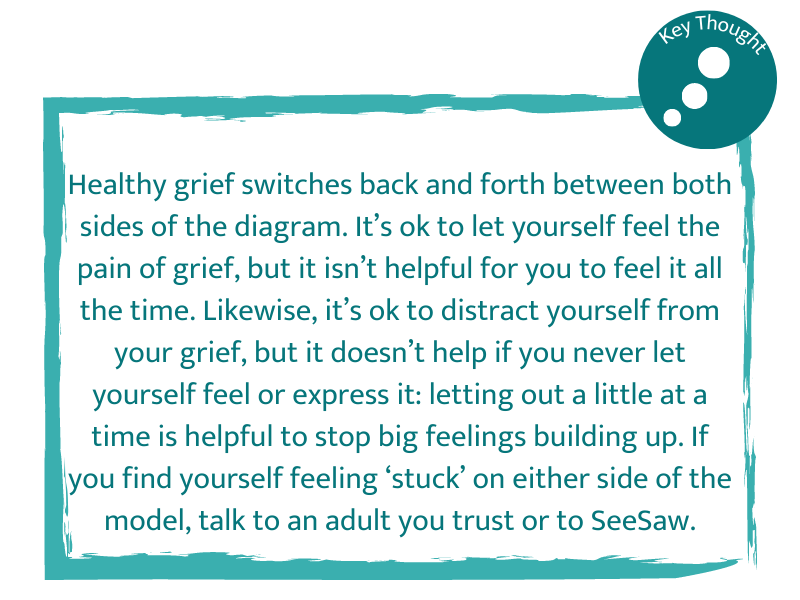Greif; what the experts say

Grief is often confusing; it can be difficult to understand what is going on in your own mind and body day to day…
…but grief is something everyone will experience at some point in their life and is a very normal human reaction, not a mental health problem. Although grief is painful and uncomfortable, it is an understandable reaction to loss, so we talk about ‘healthy grief’ (although it can feel far from ‘healthy’ when you’re experiencing it). By contrast, unhealthy grief happens when someone gets ‘stuck’ in an emotional state and can’t experience a range of feelings over time, and they might need some extra support to help them move forward. Understanding grief better is something that experts have spent a lot of time researching. Below are two theories that try to help explain how healthy grief works.
What does 'growing around grief' mean?
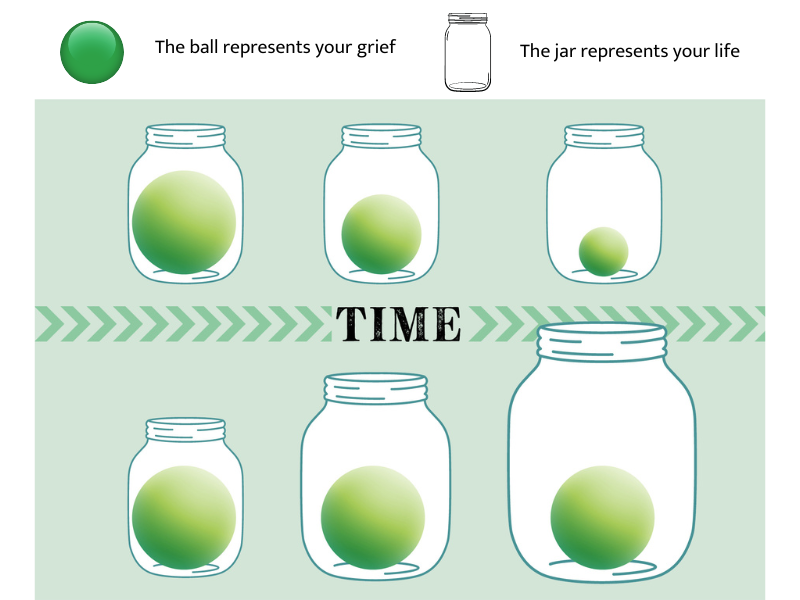
Imagine your life is a jar. Now imagine your grief is a ball. When someone dies it can feel like the ball of grief has been squeezed into the jar and takes up all the room. You might feel like your grief has taken over your entire life and is overwhelming everything.
Look at the diagram here. Some people think that over time, grief gets smaller and smaller (like the ball in the top row) and feels less painful and overwhelming. For others, this idea feels uncomfortable: they might worry that if their grief is getting smaller, it means that they care less about their special person over time, or that one day their grief will disappear as if they have forgotten their person and what they meant to them.
The second row looks at grief differently: the jar is still your life – and the ball is still your grief – but instead of your grief getting smaller, it is your life that grows bigger. As you live, it expands with new experiences and relationships. The grief never changes – it will always be there –but as your life grows it will feel less overwhelming and easier to manage.
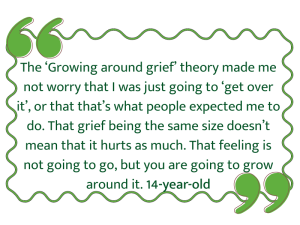
How can the 'dual process model' help me understand what healthy grief looks like
People often worry that they’re not feeling the ‘right’ thing after someone they love dies. Maybe they just watched a show on Netflix and felt guilty because for a few moments they weren’t thinking about their loss. Or perhaps they feel bad because they keep themselves distracted so they don’t think about their uncomfortable emotions.
The truth is neither of these are wrong: it’s ok not to feel sad 24/7 and it’s ok to want to distract yourself. Put simply, the ‘Dual process model’ says that healthy grief is about trying to have a balance of experiencing your grief emotions and also getting on with your life.
Families can experience conflict or misunderstandings when people are spending time in opposite sides of the model and can’t understand why others are behaving differently. Understanding how healthy grief works can help families treat each other with more patience when they are using different coping strategies to process their grief.
